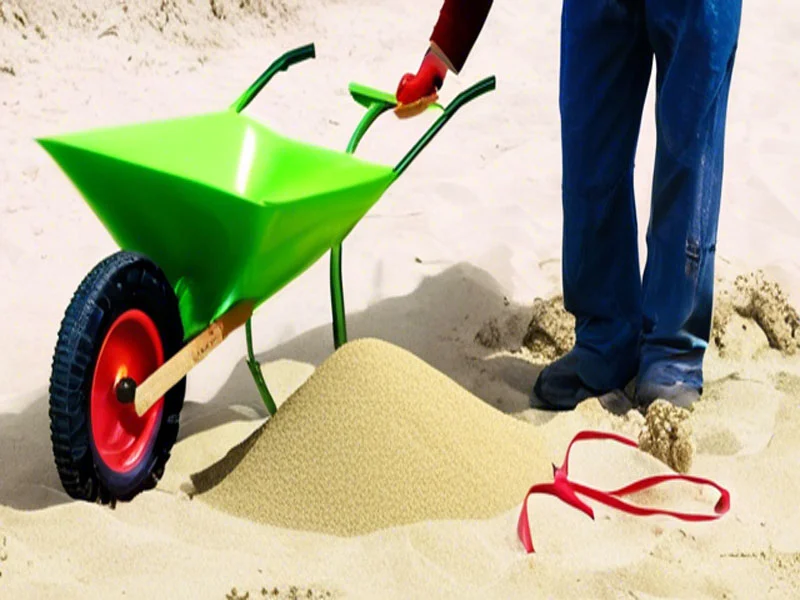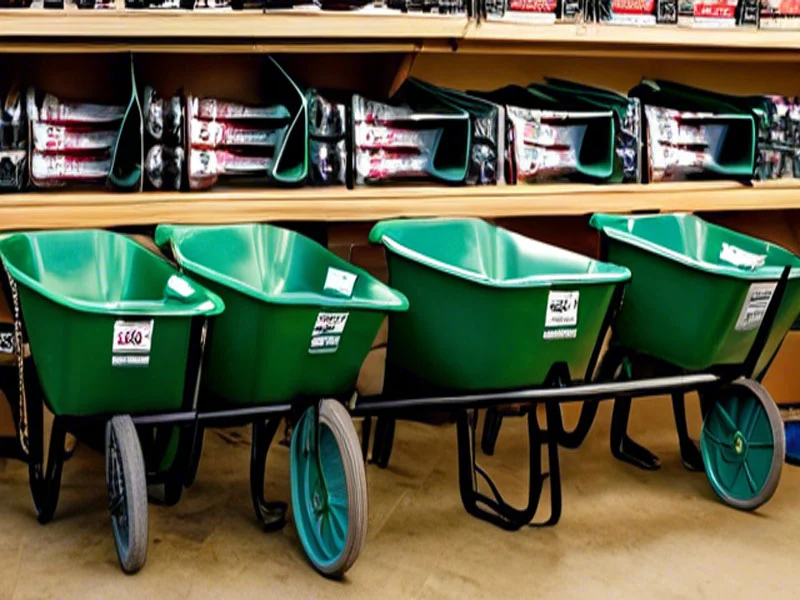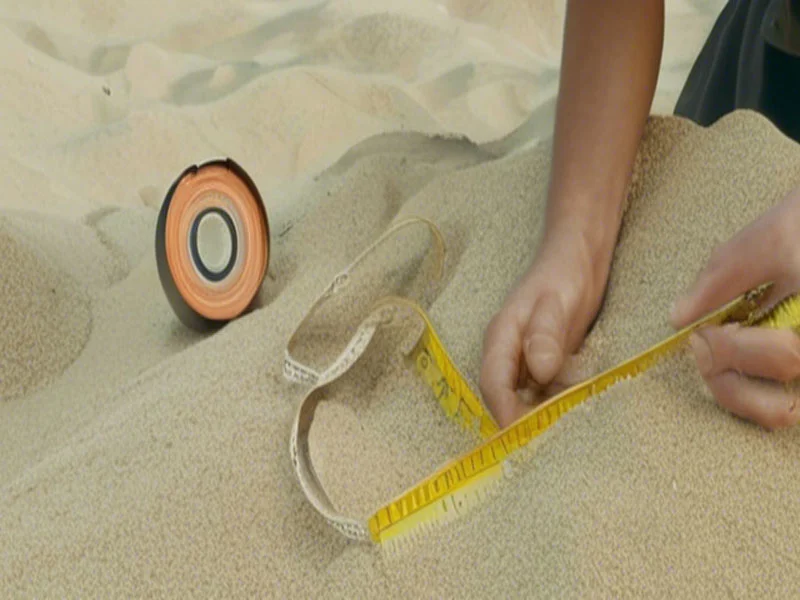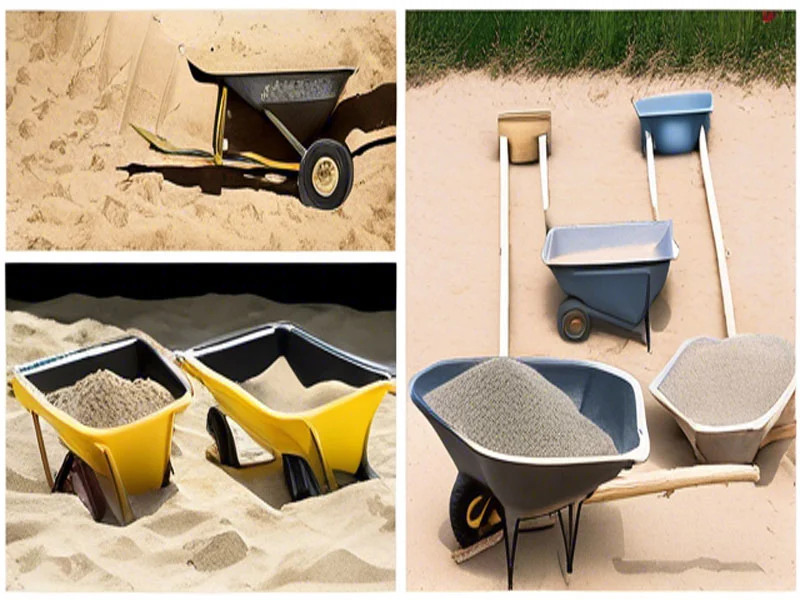Table of Contents
Introduction:
In architecture and landscaping, the low wheelbarrow is emerging as an indispensable companion, facilitating a simple but well-defined wheelbarrow with a shallow case, one or two wheels, and hand gestures in casual work areas. In his work, the focus on wheelbarrow sand capacity is paramount.
This introductory session serves as a gateway into the complexities of these versatile instruments, shedding light on their design details and emphasizing the particular importance of measuring sand forces
A. Definition of a Wheelbarrow:
Often described as a gardener’s or builder’s best friend, the winch has a classic yet discreet design. It is a deep, open container mounted on a single or double-wheel frame.
The term wheelbarrow sand capacity includes a measurement of the amount of sand that these tools can transport, material that is influenced by specific structural characteristics

B. Purpose of Measuring Sand Capacity:
The measurement of wheelbarrow sand capacity transcends mere technicality; it is the linchpin of efficiency in various construction and landscaping endeavors.
Ascertaining the sand-holding prowess of a wheelbarrow is not merely a quantitative pursuit but a practical necessity. It directly influences the workflow, ensuring that the tool aligns seamlessly with the demands of the task at hand.
The purpose of measuring sand capacity is rooted in the quest for precision and effectiveness, guiding users toward selecting the most suitable wheelbarrow for their specific needs.

Standard Wheelbarrow Capacity:
A. Common sizes available on the market:
In the expansive realm of wheelbarrows, the diversity of options is immediately apparent, each catering to specific needs and tasks. Wheelbarrows come in a spectrum of sizes, ranging from petite utility models to robust construction-grade options, all designed to handle varying levels of wheelbarrow sand capacity.
The market offers an array of choices to accommodate diverse purposes, ensuring that whether you’re tackling a backyard project or a professional construction site, there’s a wheelbarrow size perfectly suited for the sand-carrying task at hand.

B. Typical volume measurements (cubic feet or liters):
Understanding the volumetric capacity of the wheels is of the utmost importance to assess their usefulness in sand handling.
Most wheelbarrows measure their volume in cubic feet, or liters, which gives an idea of how much sand they can effectively carry. Whether you’re envisioning cubic feet of sand for your garden or a quart of sand for a construction project, quantity measurement is key.
This metric not only helps in efficient planning but also ensures easy selection of a pulley with a sand capacity that matches the requirements of your specific job, reducing the need for travel and increasing work.

Factors Influencing Wheelbarrow Sand Capacity:
A. Wheelbarrow Design:
Wheelborough design adjustments play an important role in determining the efficiency of the sand force in the pulley. Manufacturers use innovative designs that affect the winch’s shape, size, and overall weight.
The complexity of the design directly influences the wheelbarrow’s ability to transport large amounts of sand, making it important to choose a design that provides the best balance between form and function for wheelbarrow sand capacity.

B. Material and Construction Differences:
Material and construction differences significantly impact a wheelbarrow’s sand capacity. High-quality materials, such as sturdy steel or lightweight yet durable polymers, can influence the overall weight of the wheelbarrow and its ability to withstand heavy loads of sand.
Robust construction ensures longevity and reliability, allowing the wheelbarrow to maintain its sand-carrying capacity over an extended period, even in challenging environments.
Considering these material and construction aspects is crucial for selecting a wheelbarrow that meets the specific requirements of carrying sand efficiently.

C. Practical Considerations for Various Uses:
Practical considerations for various uses are essential when evaluating a wheelbarrow’s sand capacity. Different tasks require different specifications, and understanding these practical considerations is vital for optimizing wheelbarrow sand capacity.
For instance, a construction wheelbarrow may need a larger sand capacity to handle bulkier loads, while a gardening wheelbarrow may prioritize maneuverability and ease of use.
By taking into account practical factors like wheel size, handle design, and overall mobility, users can ensure that the selected wheelbarrow not only meets but exceeds expectations in terms of sand-carrying capabilities.

Calculating Sand Capacity:
Understanding unit measurements for sand, such as weight and volume, is crucial in assessing a wheelbarrow’s capacity for efficient material transport. The main keyword, wheelbarrow sand capacity, encompasses the essence of this exploration.
When dealing with sand, different applications may require varying units of measurement. Weight can be expressed in pounds or kilograms, while volume may be denoted in cubic feet or liters.
A well-informed user must grasp the significance of these measurements when selecting a wheelbarrow for specific tasks. Guidelines for calculating sand capacity based on unit measurements further illuminate the intricacies of this process.

The main keyword remains central in this context, emphasizing the importance of precision when determining how much sand a wheelbarrow can handle. These guidelines serve as a practical roadmap, ensuring users can confidently evaluate a wheelbarrow’s suitability for their intended workload.
Whether tackling construction projects or gardening endeavors, a comprehensive understanding of the main keyword ensures informed decision-making in optimizing sand-carrying capabilities.
Popular Wheelbarrow Brands and Models:
A. Overview of Well-Known Brands:
When it comes to wheelbarrows designed to handle the diverse demands of construction, gardening, or landscaping tasks, several well-known brands have earned a reputation for reliability and durability. Companies such as Jackson, Ames, and True Temper are synonymous with quality wheelbarrows that stand the test of time.
These brands are celebrated for their commitment to craftsmanship, innovation, and ergonomic design, ensuring that users can rely on their wheelbarrows for various applications.
Understanding the wheelbarrow landscape requires recognizing the prominence of these brands and the trust they instill in those seeking top-notch tools for transporting materials, particularly in assessing wheelbarrow sand capacity.

B. Examples of Wheelbarrow Models and Their Sand Capacities:
In the realm of wheelbarrows, it’s essential to delve into specific models that cater to different needs, especially concerning their sand-carrying capabilities. The Jackson M6T22, for instance, stands out with its robust construction and an impressive sand capacity of up to six cubic feet.
Similarly, the Ames True Temper CP6PS boasts a poly tray and a six-cubic-foot capacity, making it a preferred choice for heavy-duty sand transport. These examples showcase not only the diversity in wheelbarrow models but also highlight the significance of understanding their sand capacities to match the demands of specific projects.
Choosing the right wheelbarrow model, considering its sand capacity, ensures efficiency and reliability in various practical applications.

Tips for Efficient Sand Transport:
A. Proper Loading Techniques:
When it comes to maximizing wheelbarrow sand capacity, employing proper loading techniques is paramount. Begin by ensuring an even distribution of the sand within the wheelbarrow, avoiding concentrated loads that may affect balance.
It’s beneficial to layer the sand evenly and compactly, optimizing the use of the available space. Additionally, be mindful of not overloading the wheelbarrow beyond its specified capacity to prevent strain on the equipment and ensure a smooth transport process.
By adhering to these loading principles, you can make the most of your wheelbarrow’s sand-carrying capabilities.

B. Maintaining Wheelbarrow Balance:
Achieving and maintaining balance is a crucial aspect of efficient sand transport. Unevenly distributed weight can lead to difficulties in maneuvering the wheelbarrow, potentially causing spills or instability. To counter this, regularly check and adjust the load to maintain a balanced distribution.
Keep the center of gravity low by loading heavier items closer to the wheel, preventing unnecessary strain on the operator and ensuring a steady and controlled movement. By prioritizing balance, you enhance the overall performance and safety of your wheelbarrow during sand transportation.

C. Choosing the Right Wheelbarrow for Specific Sand-Related Tasks:
Selecting the appropriate wheelbarrow for specific sand-related tasks significantly impacts efficiency and productivity. Different wheelbarrows come with varying capacities, designs, and features.
Consider the volume of sand you regularly handle and choose a wheelbarrow that aligns with your specific needs. Whether it’s a sturdy, large-capacity model for heavy-duty construction work or a more maneuverable and compact version for gardening projects, the right wheelbarrow enhances both performance and user comfort.

Assessing your sand-carrying requirements and matching them to the capabilities of the wheelbarrow ensures optimal results in various tasks.
Conclusion:
The exploration emphasizes the diverse landscape of wheelbarrow capacities, acknowledging design nuances and size differences. The importance of understanding unit measurements for sand becomes apparent, guiding users to choose an appropriate wheelbarrow for specific applications.
The phrase wheelbarrow sand capacity echoes throughout, highlighting its significance in decision-making. Practical tips for efficient sand transport, including loading techniques and balance maintenance, reinforce the importance of aligning the wheelbarrow’s capacity with the task at hand.
Ultimately, the keyword wheelbarrow sand capacity serves as a guide for users to make informed choices for effective material transport.
B. Considerations for Selecting a Wheelbarrow Based on Sand Capacity:
The discussion revolves around the crucial factor of wheelbarrow sand capacity and its pivotal role in construction and gardening tasks. The standard construction wheelbarrow, holding 6 cubic feet, can transport approximately 290 kg of dry sand.
Variations in wheelbarrow sizes, ranging from 4 to 8 cubic feet, allow for volume adjustments. Wet sand adds 15–20% to the weight, and the wheelbarrow itself contributes around 15 kg to the total load.



